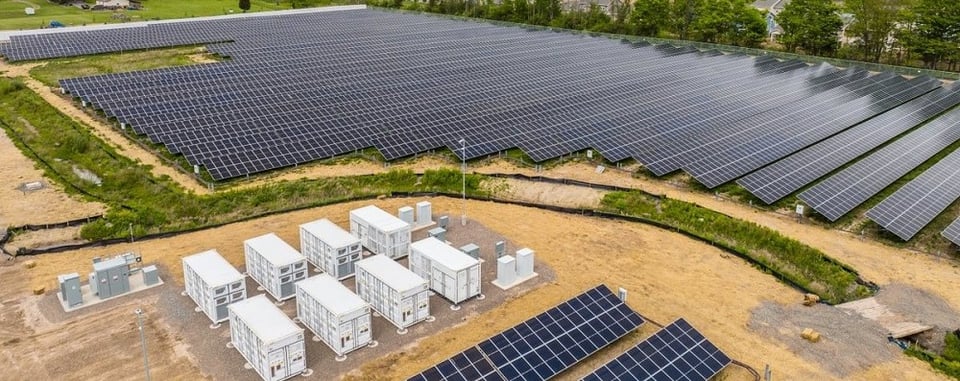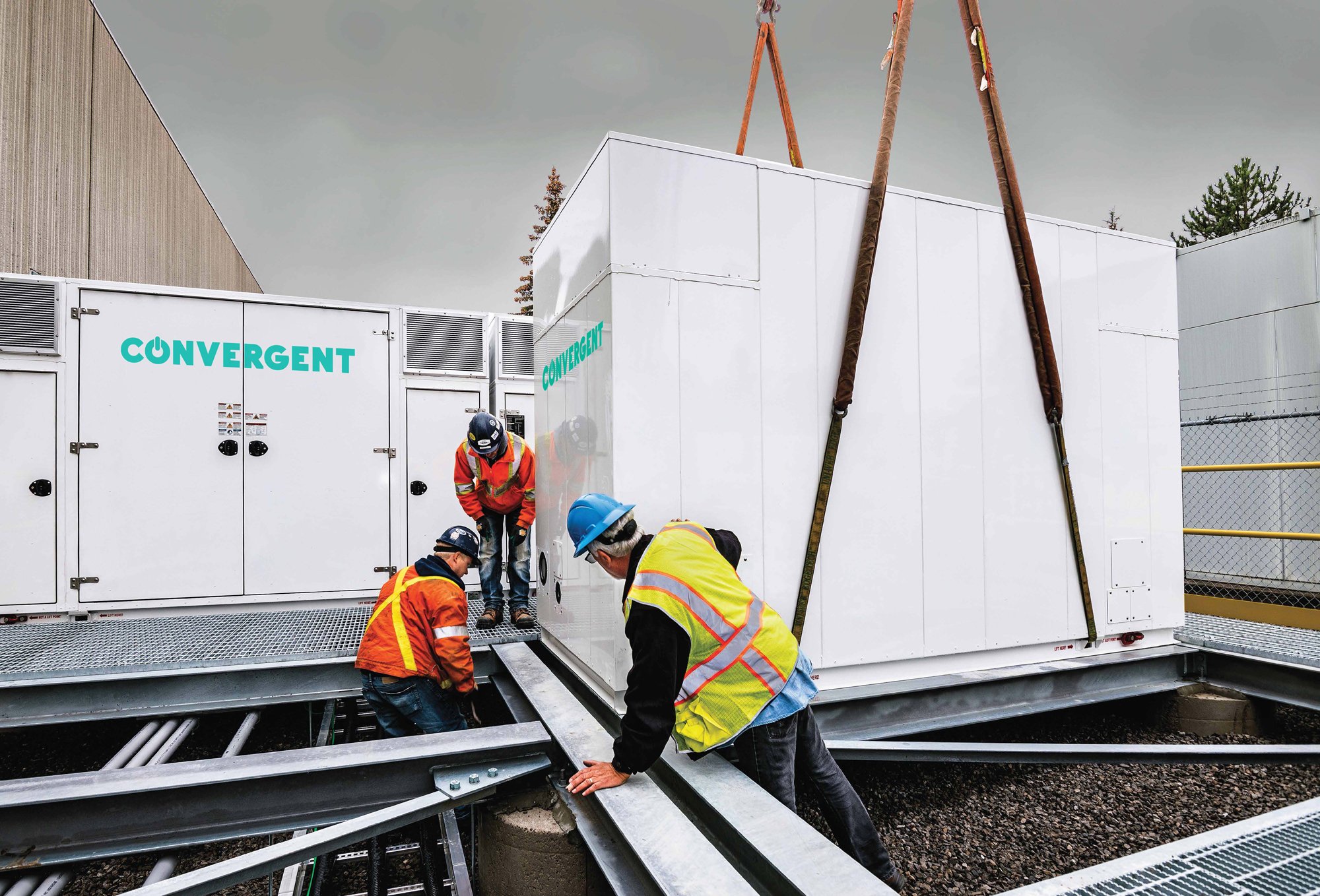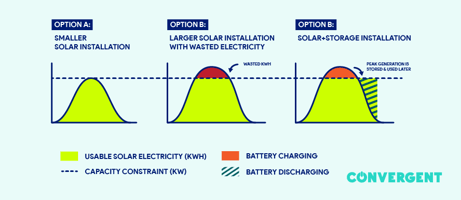How to Mitigate Rising Energy Costs in ISO-NE With Energy Storage

The New England power system is undergoing a substantial transformation, highlighted by the commitment of five out of six states in ISO-NE to an 80% reduction in carbon dioxide emissions by 2050. This shift towards renewable energy is reshaping the grid ISO-NE, which is the non-profit responsible for keeping electricity flowing across the six New England states and ensuring that the region has reliable, competitively priced wholesale electricity.
The challenge for utilities is mounting. Energy costs, however, are already higher in New England than most of the country and are expected to continue rising due to the growing demand for electricity (primarily from electrification and EV initiatives), and the shift from fossil fuel to sustainable energy sources.
Further, ISO-NE’s transmission system requires more infrastructure and upgrades to accommodate these changes. In fact, the cost of transmission is already anticipated to increase by almost 25% between 2024 and 2028.
In this blog post, we will cover what’s behind rising energy costs in ISO-NE and how on-site renewable energy sources—including energy storage—can help utilities to provide a more cost-effective, reliable, and sustainable grid to ratepayers.
What’s Driving ISO-NE’s Rising Energy Costs?

Rising energy prices can be attributed to a combination of factors. In New England, specifically, these factors include:
⚡ Increased Energy Demand: As the demand for electricity rises—especially during peak periods—the strain on the power grid intensifies. New England predicts winter peak load will be 31% higher in 2032/33 than 2022/23.
🏋️ Obstacles for Large Renewable Generation Projects: Large renewable generation plans, such as off-shore wind and solar projects, continue to be postponed due to supply chain dynamics, inflation, and the system upgrades required to interconnect renewable resources. In addition, ISO-NE is responsible for assuring reliability and resilience of the bulk system and the balance of energy supply to meet demand. Major upgrades have been identified and the ability to get them in place in time will be challenging, as will finding the cost recovery mechanisms that impact customers the least.
💲 High Cost of Fossil Fuels: The prices of fossil fuels—such as natural gas and oil—often play a significant role in determining energy prices. Natural gas delivers almost half of the region’s electricity and oil, and while small overall, is relied on during the most expensive hours. Fluctuations in the global energy market, geopolitical events, and supply-demand dynamics can also lead to variations in fossil fuel prices. These cost fluctuations are further exacerbated by cold weather, especially when natural gas supplies are limited. Fossil-fueled generation will continue to be part of ISO-NE’s energy mix as it strives to reduce its carbon emissions.
How Energy Storage Can Support the Clean Energy Transition While Reducing Costs
For utilities aiming to reduce capacity and transmission costs or hedge against future increases, smaller-scale energy storage (i.e. battery storage) is an optimal solution. As New England enters a transition period with many variables and a changing landscape, energy storage will be critical to not only lowering costs but also securing the grid and providing reliability.
If you are looking to reduce capacity and transmission costs—or hedge against future cost increases—energy storage is an optimal solution. Often referred to as the “Swiss Army knife” of solutions, the versatility of energy storage can do many things, depending on the application.
To meet the electric grid’s highest periods of consumption, also known as “peak demand,” utilities often rely on natural gas peaker plants, which can quickly ramp up production to meet the needs of the grid. Those plants, however, are expensive, oftentimes inefficient, and carbon-intensive. On the other hand, battery storage systems (especially when paired with solar), produce zero on-site greenhouse gas emissions, and may be deployed to augment peaking capacity or replace the need for peaking generation entirely!
In addition, energy storage can expedite the retirement of existing fossil generation and avoid costly transmission and distribution system upgrades.
Further, the features of a battery energy storage system include a small footprint, quiet and pollution-free operations, instantaneous response, and the ability to provide added capacity during grid peaks, making it an ideal solution for utilities.
The Benefits of Energy Storage to Municipal Utilities
For utilities looking to reduce capacity and transmission costs—or hedge against future cost increases—energy storage is an optimal solution.
The primary benefits of energy storage includes reducing costs for utilities (and your communities). Other benefits include decreasing carbon emissions and integrating or maximizing renewable energy, and improving reliability. Energy storage can provide benefits to your utility on its own, or paired with solar energy (solar-plus-storage).

In ISO-NE, customers of municipal utilities pay about half the cost of those in neighboring towns served by Investor Owned Utilities. Having energy storage inside a municipal system can reduce your dependency on generation and the transmission system during periods of high demand and high cost. It can also provide additional savings to municipals for the unhedged portion of their supply portfolio. Lastly, energy storage can defer major substation upgrades and, in some cases, can provide emergency power to critical municipal services. Ultimately, utilities will be able to pass any savings from an energy storage system on to their customers in the form of lower electricity bills.
Generally speaking, Convergent’s customers will save around seven-figures over the life of a battery storage system or solar-plus-storage system, depending on their capacity and transmission costs or peak demand costs, their risk tolerance, and other variables. In some cases, municipal utilities can save their communities around 10 million dollars over the life of the system.
The Benefits of Energy Storage to Investor-Owned Utilities
Energy storage plays an ever-increasing role as a dependable resource as long as it is reliable and operated properly. On the distribution system, it can be deployed to defer major capital projects, support increased localized peak loads, provide resilience and emergency backup, and save customers money.
How to Get Started with Energy Storage
Convergent Energy and Power (Convergent), a leading developer of energy storage solutions in North America, has been in the energy storage industry since its infancy, more than a decade ago. Throughout that time, we’ve gained experience and expertise, working closely with utilities in New England to take the hassle out of energy storage by building, owning, and operating systems on their behalf. We’re proud to say that it has never been easier to integrate energy storage into your organization and the time has never been better.
If you’re interested in learning more about how energy storage (with or without solar generation) can benefit your utility, please contact us today for a free, customized evaluation.



